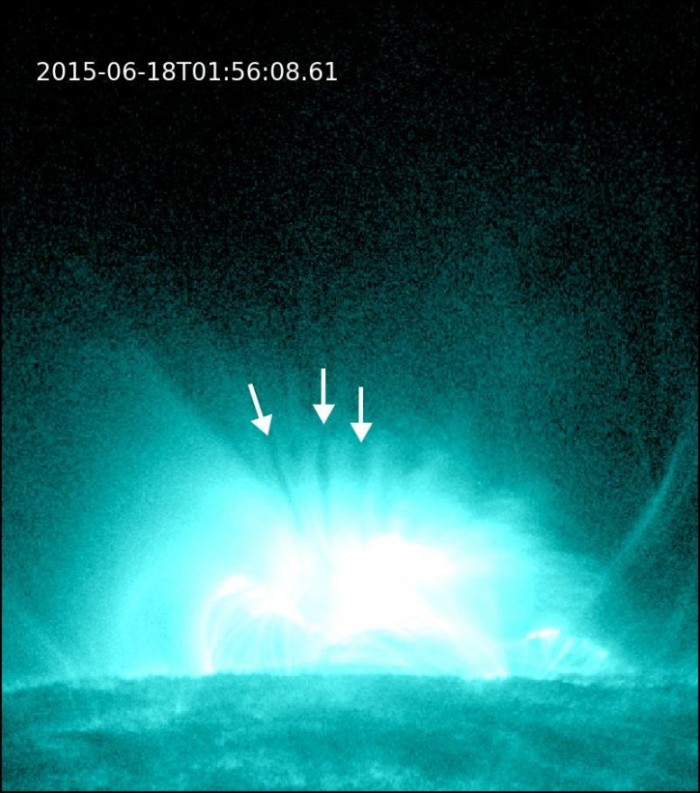In January 1999, scientists observed a mysterious movement in a solar flare. Unlike a typical flare that shows bright energy erupting outward from the sun, this solar flare also shows a downward flow of motion, as if matter were falling back toward the sun. Described as a "dark void that moves downwards," astronomers wonder exactly what they're seeing.

In a study published Jan. 27 in Nature Astronomy, astronomers at Harvard and the Smithsonian Center for Astrophysics (CfA) offered a new explanation for this little-known motion, now known in science as "supra-arcade downflows" (SADs).
"We wanted to know how these structures happen," said Study lead author and CfA astronomer Shen Chengcai, who describes the structures as "allusion-like features." "What's driving them, and are they really related to magnetic reconnection?"
Since the discovery of SADs in the 90s, scientists have believed they are related to magnetic reconnection. This process occurs when a magnetic field breaks, releasing fast-moving and extremely high-energy radiation before recombining.
"What happens on the sun is that there are a lot of magnetic fields, and they point in all different directions. Eventually, these magnetic fields are pushed together so that they are reconfigured and released a lot of energy in the form of solar flares," said Study co-author Kathy Reeves, a CfA astronomer. Reeves added: "It's like stretching a rubber band and then cutting it in the middle. It was stressed and pulled very thinly, so it would fold back. ”
Scientists believe SADs are a sign that a broken magnetic field "turns back" to the sun after a solar flare erupts.
But there is a problem. Most of the fall that scientists have observed is "inexplicably slow," said co-author Bin Chen, an astronomer at the New Jersey Institute of Technology.
The researchers explain: "This is not predicted by classical reconnection models, which show that the fall rate should be much faster. This is a conflict that requires some other explanation. ”
To find out what was happening, the team analyzed images taken by the Atmospheric Imaging Component (AIA) on NASA's Solar Dynamics Observatory. Designed and built by cfA and led by lockheed martin's Solar Astrophysics Laboratory, the AIA section takes images of the sun every 12 seconds at seven different wavelengths of light to measure changes in the sun's atmosphere.
They then performed a three-dimensional simulation of the solar flare and compared it with the observations. The results showed that most SADs were not generated by magnetic reconnection. Instead, they form on their own in a turbulent environment and are the result of the interaction of two fluids of different densities.
Reeves says scientists basically see the same thing that happens when water and oil are mixed together: two fluids of different densities are unstable and eventually separate.
"Those dark, finger-like voids are actually plasma-free. The density there is much lower than the surrounding plasma," Reeves said.
The team plans to continue using three-dimensional simulations to study SADs and other solar phenomena to better understand magnetic reconnection. By understanding the processes that drive solar flares and solar eruptions, they may eventually help develop tools to predict space weather and mitigate their effects.